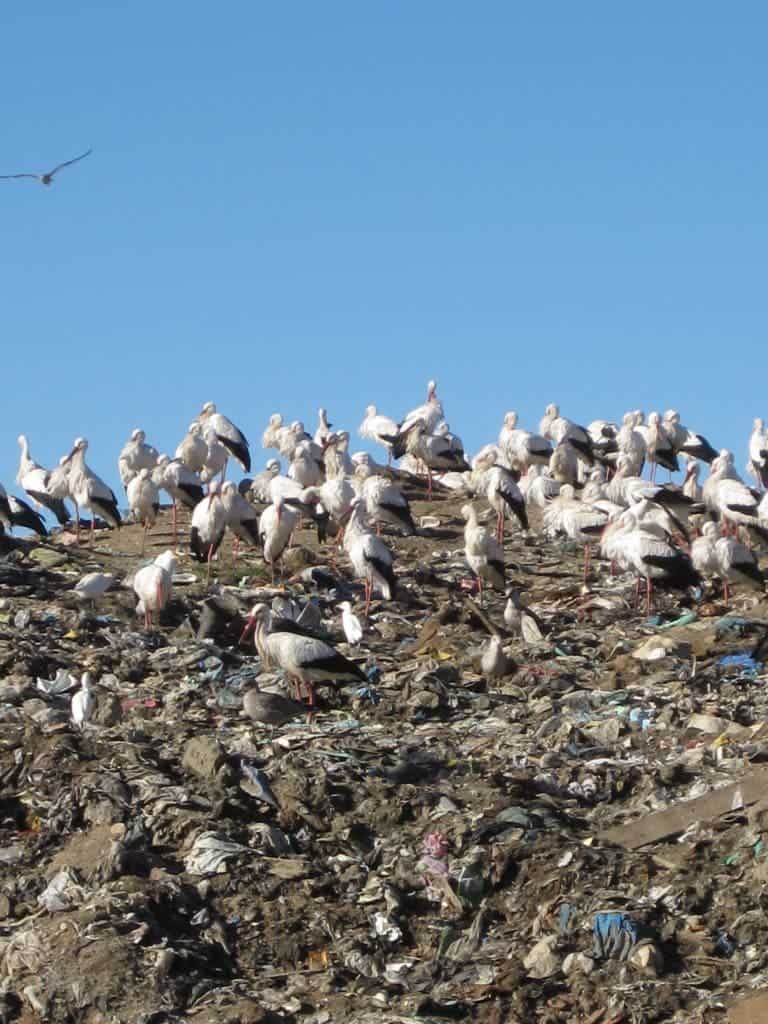Traditionally, white stork migrated from Europe to Africa during the winter. Over the last couple of decades increasing number of storks have started wintering in the South of Europe. University of East Anglia researchers say storks prefer to live in Spain and Portugal because there’s plenty of junk food lying around landfill sites. The latest surveys suggests the birds now live and nest there all year long.

GPS tracking devices were strapped on 48 birds whose location was relayed to the researchers five times a day. An accelerometer provided more subtle data pertaining to the storks behaviour. Thus, all the key locations like nesting and feeding sites could be identified. Short and long distance flights were also recorded.
“Storks now rely on landfill sites for food – especially during the non-breeding season when other food sources are more scarce. This has facilitated the establishment of resident populations,” said Dr Aldina Franco, from UEA’s School of Environmental Sciences.
“We found that the landfill sites enable year-round nest use, which is an entirely new behaviour that has developed very recently. This strategy enables the resident birds to select the best nest sites and to start breeding earlier.”
“Having a nest close to a guaranteed food supply also means that the storks are less inclined to leave for the winter. They instead spend their non-breeding season defending their highly desirable nest locations,” she added.
Besides showing that some storks form permanent nesting sites near landfills, the researchers found some birds are willing to travel up to 48.2km to visit landfill sites during the non-breeding season and up to 28.1km during the breeding season. Due to the implementation of EU regulations, there will be a sharp reduction of organic material in landfill sites by 2016 as many will be closed and the remaining will be covered. Portugal’s stork population has grown 10 fold over the last 20 years, now numbering 14,000 wintering birds. These storks will soon have to find an alternative winter food supply. “It may well impact on their distribution, breeding location, chick fledging success and migratory decisions,” Franco said.
The findings appeared in the journal Movement Ecology.


